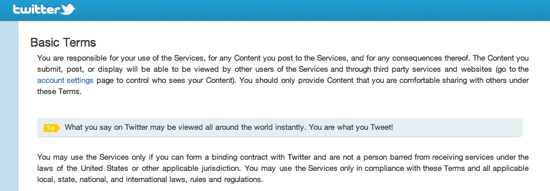- Home
- Blog
- Web Design How to Develop Your Website’s Tone of Voice
How to Develop Your Website’s Tone of Voice
-
 8 min. read
8 min. read
-
 William Craig
William Craig CEO & Co-Founder
CEO & Co-Founder
- President of WebFX. Bill has over 25 years of experience in the Internet marketing industry specializing in SEO, UX, information architecture, marketing automation and more. William’s background in scientific computing and education from Shippensburg and MIT provided the foundation for MarketingCloudFX and other key research and development projects at WebFX.
 There are two branches of Starbucks near my office, but I will always go to the one that’s slightly further away. Both sell exactly the same products, the decor is identical, and the queues are always a similar length. Why go to the one that’s further away?
There are two branches of Starbucks near my office, but I will always go to the one that’s slightly further away. Both sell exactly the same products, the decor is identical, and the queues are always a similar length. Why go to the one that’s further away?
I like the way the barista talks to me. Although the content of our brief exchanges is no different from the conversation I’d have at the other branch, there’s something very different about how this interaction sounds and feels: tone. His tone is unfailingly friendly and upbeat, which always leaves me with a smile and keeps me coming back to that particular branch.  My loyalty is certainly not unique.
My loyalty is certainly not unique.
In a competitive market where businesses strive to match each other on cost and quality, most consumers’ choices will be influenced (consciously or not) by the tone of voice in which services are presented and delivered. In many ways, it’s easy to choose an effective tone when your customers are standing right in front of you and you can see their reactions. However, a huge proportion of business has shifted from the verbal face-to-face into the textual via websites, emails and social networking.
In this shift, many businesses lose their voices. Faced with the task of writing web copy, someone whose spoken tone of voice is friendly and confident can turn mechanical and distant as if they were tasked with producing a formal report. What’s most dangerous about this is that they can’t see this unnecessary tonal shift putting off their customers in the same way they would if they were to conduct a meeting with a client in the same way as they write.
In this article, we’ll look at some of the common problems with tone of voice in web copy and how to avoid them. Beyond that, we’ll consider how to go about developing an effective tone of voice for a website and maintaining it through the use of tonal guidelines.
Voice vs. Tone
Before diving in further, we should first examine the distinction between tone of voice and voice itself. Tone is a verbal expression of mood best adapted according to the audience. You present the same information very differently to, say, a 4-year-old as opposed to a 40-year-old.
You do that through tone of voice: the words you choose and the way that you structure them. Your voice, however, is your overall verbal personality. Regardless of whom you’re communicating with and at what level, your voice remains the same.
This should be true for the voice of a business as well. Different media geared to different audiences may demand an alteration in tone, but voice should remain stable. Let’s take a look at two brand voice examples — BBC News and their youth-oriented site, CBBC Newsround.
Both are from the same organization, both cover similar material, but, as shown below, the tone is markedly different to match the respective audiences.  From BBC News, “Wimbledon 2011: Relaxed Murray ready to ‘up his game’”
From BBC News, “Wimbledon 2011: Relaxed Murray ready to ‘up his game’”  From CBBC Newsround, “Wimbledon: Andy Murray says he’s ready for Nadal showdown“ It’s clear from the word choice and structure that the tone of the second example from CBBC Newsround is geared towards a younger audience than the first: it’s lighthearted and lively, whereas the first example is more serious and composed. Despite the difference in tone, though, it’s evident that the source is the same — there is a consistent voice across both websites.
From CBBC Newsround, “Wimbledon: Andy Murray says he’s ready for Nadal showdown“ It’s clear from the word choice and structure that the tone of the second example from CBBC Newsround is geared towards a younger audience than the first: it’s lighthearted and lively, whereas the first example is more serious and composed. Despite the difference in tone, though, it’s evident that the source is the same — there is a consistent voice across both websites.
Setting the Tone
There are two key points to determine before defining the appropriate tone for your website.
Who is your target audience?
- What is their age group?
- Where are they located: urban or rural, domestic or international?
- What sort of values do they hold: conservative, ethical, cautious, impulsive or economical?
- More importantly, what do they want from you?
What does your website want to achieve?
- Is it an e-commerce site designed to generate sales?
- Is it a portfolio of your work?
- Is it educational?
- Does it offer an online community for users to engage with?
- Is it meant to draw in new consumers, support existing ones, or both?
These are both points that should have guided the visual design of a website and, equally, they should be the force behind its content. Forgetting the target audience or the ultimate purpose of the website sounds like an unimaginable faux pas, but it happens surprisingly frequently. Let’s consider the example of Goldman Sachs below.
The company has invested large sums of money to make the company appear competent, ethical and approachable, but their website tells a different story.  The above example isn’t just poorly written and unpersuasive, it also conflicts with the stated values of their brand. The grammar issues make them appear incompetent and the tone is distant and cold.
The above example isn’t just poorly written and unpersuasive, it also conflicts with the stated values of their brand. The grammar issues make them appear incompetent and the tone is distant and cold.
Developing Tonal Guidelines
Once you’ve determined your audience and your site’s purpose, you’re halfway to deciding on tone of voice.
It may be helpful to consider the personality of an employee you’d want to represent your brand at this point. For example, if you’re advertising housing for students, you want someone friendly, open and fun. If you’re selling organic fruit on the Web: you want your representative to sound healthy and ethical.
If you’re describing services at a care home: you want someone kind, professional and understanding. You get the idea. These adjectives are a good start, but they’re all subjective.
The next step is to start defining what these adjectives mean and don’t mean. Let’s take the student housing example:
| Friendly | Open | Fun | |
|---|---|---|---|
| Does mean | Informal: avoid jargon. Conversational: could the copy be read aloud to students without sounding misplaced? | Inclusive: use uncomplicated language for students who don’t speak English as their first language.
Personal: use active voice. |
Enthusiastic and upbeat: be passionate about the services on offer. If the copywriter believes in the services they’re writing about, that impression will be transferred to the reader. |
| Doesn’t mean | Unprofessional: avoid grammatically incorrect language, even if it’s common in verbal conversation. Overuse of slang: use it sparingly. | Untrustworthy: open and honest with students, and confidential with their data.
Patronizing: be straightforward but don’t “dumb down” any necessary information. |
Excitable: don’t overuse exclamation marks or other punctuation to get the point across. Unrealistic: don’t exaggerate to get the reader’s attention. |
Guidelines like these don’t take long to put together, but will offer an invaluable reference to your copywriters, be that you, another member of your organization, or an external copywriting agency. Going a step further and including examples of copy you do and don’t like is also worthwhile, because it’s easy for different people to interpret your guidelines differently.
Consistency is Key
Take your tonal guidelines and apply them to your whole website, including your contact information, your terms and conditions and even your 404 error pages.
Of course, readers will expect different vocabulary for legal information but that doesn’t necessitate a shift into passive voice and stuffy, “authoritative” language. Take a look at this section from Twitter’s terms of service:  The vocabulary is appropriate to the legal subject matter but continues in the active voice, even slipping in a pun in the middle to maintain a lighthearted tone. Being bold enough to stand apart from aging conventions communicates confidence.
The vocabulary is appropriate to the legal subject matter but continues in the active voice, even slipping in a pun in the middle to maintain a lighthearted tone. Being bold enough to stand apart from aging conventions communicates confidence.
Things to Watch Out For
Watch out for other basic inconsistencies that will blemish your hard work on tone.
No matter how seamlessly professional your tone is, a typo or misplaced punctuation mark will make you look foolish. Here are two tips:
- A proofreader is not optional. Of course, the writer should proofread the first draft, but there is no substitute for a fresh perspective.
- Edit without mercy. Cut, cut, cut. If you can identify unnecessary words, then remove them and get to the point.
Summary
To briefly outline the points we’ve covered:
- Tone of voice, used well, will strengthen brand loyalty and set businesses apart from competitors.
- Tone can be adapted according to the audience and platform, but ensure that the voice remains constant.
- The key considerations in choosing a tone of voice for your website are 1) the target audience and 2) the type of interaction you intend them to have with your site.
- Producing a tonal guideline sheet (example shown above) will help establish and maintain a distinctive tone of voice. Used as a reference by copywriters, it will yield consistent results, especially where multiple authors are involved.
Need help establishing your brand’s tone of voice in your web copy?
Our professional brand voice copy services help you craft website copy that reflects your brand’s voice, tone, and values. Our expert copywriters and editors can help you maintain consistency across all of your online content so your audience recognizes your brand every time.
Call us at 888-601-5359 to learn more about our copywriting services!
Related Content
-
 President of WebFX. Bill has over 25 years of experience in the Internet marketing industry specializing in SEO, UX, information architecture, marketing automation and more. William’s background in scientific computing and education from Shippensburg and MIT provided the foundation for MarketingCloudFX and other key research and development projects at WebFX.
President of WebFX. Bill has over 25 years of experience in the Internet marketing industry specializing in SEO, UX, information architecture, marketing automation and more. William’s background in scientific computing and education from Shippensburg and MIT provided the foundation for MarketingCloudFX and other key research and development projects at WebFX. -

WebFX is a full-service marketing agency with 1,100+ client reviews and a 4.9-star rating on Clutch! Find out how our expert team and revenue-accelerating tech can drive results for you! Learn more
Make estimating web design costs easy
Website design costs can be tricky to nail down. Get an instant estimate for a custom web design with our free website design cost calculator!
Try Our Free Web Design Cost Calculator


Web Design Calculator
Use our free tool to get a free, instant quote in under 60 seconds.
View Web Design CalculatorMake estimating web design costs easy
Website design costs can be tricky to nail down. Get an instant estimate for a custom web design with our free website design cost calculator!
Try Our Free Web Design Cost Calculator





